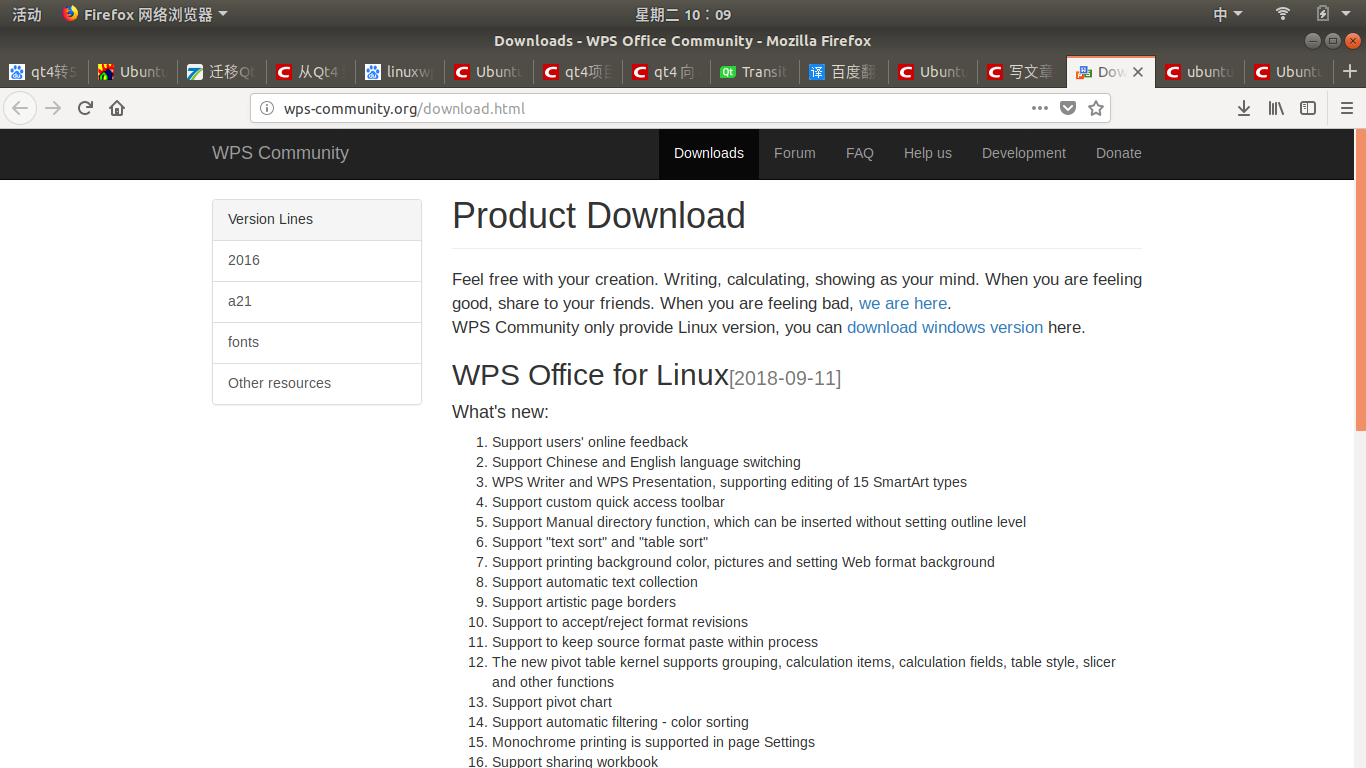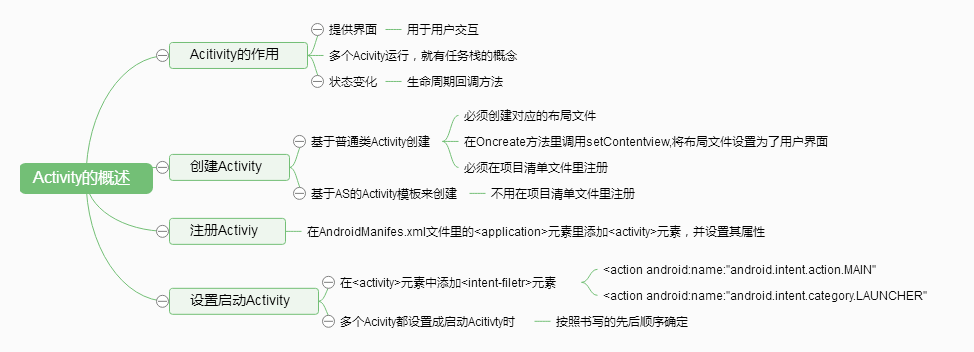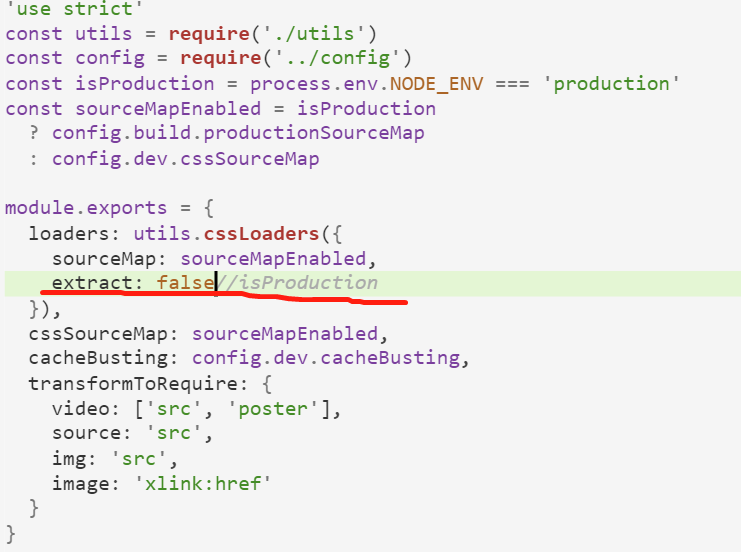Ansible常见模块及用法
Ansible**常见模块及用法**
一、**ansible**选项说明
[root@cen7 ~]# man ansible
ansible
ansible
-m module:没指定-m选项,默认为command-a MODULE\_ARGS, --args MODULE\_ARGS:模块参数,,如果执行默认COMMAND的模块,即是命令参数,如:“date”,"pwd"等等-f forks:并行任务数。NUM被指定为一个整数,默认是5
-l SUBSET, —limit SUBSET:进一步限制所选主机/组模式 —limit=192.168.91.135 只对这个ip执行
-S, --su:使用su命令-s, --sudo:使用sudo免密-B SECONDS, --background=SECONDS:后台运行超时时间
-T TIMEOUT, —timeout=TIMEOUT:SSH超时时间,默认是10S
[root@cen7 ~]# ansible-doc -l
查询ansible**支持的核心模块**
[root@cen7 ~]# ansible-doc -h
Usage: ansible-doc [-l|-F|-s] [options] [-t
plugin documentation tool
Options:
-a, —all **For internal testing only** Show documentation for
all plugins.
-h, —help show this help message and exit
-l, —list List available plugins
-F, —list_files Show plugin names and their source files without
summaries (implies --list)
-M MODULE_PATH, —module-path=MODULE_PATH
prepend colon-separated path(s) to module library(default=\[u'/root/.ansible/plugins/modules',u'/usr/share/ansible/plugins/modules'\])
-s, —snippet Show playbook snippet for specified plugin(s)
-t TYPE, —type=TYPE Choose which plugin type (defaults to “module”)
-v, —verbose verbose mode (-vvv for more, -vvvv to enable
connection debugging)
—version show program’s version number and exit
查询模块文档:
[root@cen7 ~]# ansible-doc -s modename
二、**ansible**常用模块及用法
1**、命令模块(command**)及常见错误说明
[root@cen7 ~]# ansible-doc -s command
在远程节点执行一个命令,command模块要执行的命令不用设置为key=value格式,直接给出要执行的命令即可,而且-m command可以省略
参数 :-a ‘command’
[root@cen7 ~]# ansible 192.168.88.131 -m command -a ‘date’
警告:提示没有主机匹配,所有主机都应该定义在主机清单当中
[WARNING]: provided hosts list is empty, only localhost is available. Note that the implicit
localhost does not match ‘all’
[WARNING]: Could not match supplied host pattern, ignoring: 192.168.88.131
[root@cen7 ~]# cd /etc/ansible/
[root@cen7 ansible]# ls
ansible.cfg hosts roles
[root@cen7 ansible]# cp hosts{,.backup}
[root@cen7 ansible]# vi hosts
[root@cen7 ansible]# more hosts
192.168.88.132
[websrvs]
192.168.88.130
192.168.88.131
[dbsrvs]
192.168.88.130
192.168.88.129
例1**、单一远程节点执行命令:直接指定远程节点IP**
[root@cen7 ansible]# ansible 192.168.88.131 -m command -a ‘ifconfig’
192.168.88.131 | SUCCESS | rc=0 >>
eth1 Link encap:Ethernet HWaddr 00 29
29 90:19
90:19
inet addr:192.168.88.131 Bcast:192.168.88.255 Mask:255.255.255.0 …
例2**、所有远程节点都执行命令:使用all**参数
[root@cen7 ansible]# ansible all -m command -a ‘date’
The authenticity of host ‘192.168.88.132 (192.168.88.132)’ can’t be established.
ECDSA key fingerprint is SHA256:lX5CsTbmnydhZUoUX49gGr02T8d79E8paqrc1FNUaAE.
ECDSA key fingerprint is MD5 38
38 fd
fd 89
89 8b
8b 70
70 bc
bc 19:63:03.
19:63:03.
Are you sure you want to continue connecting (yes/no)? 192.168.88.129 | UNREACHABLE! => {
"changed": false,"msg": "Failed to connect to the host via ssh: ssh: connect to host 192.168.88.129 port 22: No route to host\\r\\n","unreachable": true
}
#此处报错No route to host,原因是129主机没有启动
192.168.88.131 | SUCCESS | rc=0 >>
2018年 06月 13日 星期三 15:04:40 CST
192.168.88.130 | SUCCESS | rc=0 >>
2018年 06月 13日 星期三 15:04:42 CST
192.168.88.132 | UNREACHABLE! => {
"changed": false,"msg": "Failed to connect to the host via ssh: Host key verification failed.\\r\\n","unreachable": true
}
#此处报错原因为192.168.88.132(本机)位配置ssh单向信任:
#注意:如果需要在本机上执行命令,则必须配置对本机的ssh单向信任
[root@cen7 ansible]# ssh-copy-id -i ~/.ssh/id_rsa.pub root@192.168.88.132
[root@cen7 ansible]# vi hosts
#192.168.88.129
[root@cen7 ansible]# ansible all -a ‘date’
192.168.88.132 | SUCCESS | rc=0 >>
2018年 06月 13日 星期三 23:10:26 CST
192.168.88.130 | SUCCESS | rc=0 >>
2018年 06月 13日 星期三 15:10:30 CST
192.168.88.131 | SUCCESS | rc=0 >>
2018年 06月 13日 星期三 15:10:31 CST
例3**、下载阿里yum源websrvs主机/field/tmp**目录下
[root@cen7 ansible]# ansible websrvs -a ‘wget -O /field/tmp/Centos-7.repo http://mirrors.aliyun.com/repo/Centos-7.repo‘
[WARNING]: Consider using the get_url or uri module rather than running wget. If you need to use command because get_url or uri is insufficient you can add warn=False to this command task
or set command_warnings=False in ansible.cfg to get rid of this message.
#此处提示下载可以使用get_url模块
192.168.88.130 | SUCCESS | rc=0 >>
--2018-06-13 15:16:37— http://mirrors.aliyun.com/repo/Centos-7.repo
正在解析主机 mirrors.aliyun.com… 121.31.31.39, 121.31.31.210, 121.31.31.40, …
略…
0K .. 100% 222M=0s
2018-06-13 15:16:37 (222 MB/s) - 已保存 “/field/tmp/Centos-7.repo” [2573/2573])
[root@www ~]# ll /field/tmp/
总用量 4
-rw-r—r—. 1 root root 2573 11月 21 2014 Centos-7.repo
2**、user模块:用户模块**
参用参数:
-a ‘name=xxx state={present|absent} system={yes|no} uid=xxx’
其它参数:ansible-doc -s user
例1**、创建普通用户**
[root@cen7 ansible]# ansible websrvs -m user -a “name=hauser state=present”
192.168.88.130 | SUCCESS => {
"changed": true,"comment": "","create\_home": true,"group": 502,"home": "/home/hauser","name": "hauser","shell": "/bin/bash","state": "present","system": false,"uid": 502
}
192.168.88.131 | SUCCESS => {
"changed": true,"comment": "","create\_home": true,"group": 502,"home": "/home/hauser","name": "hauser","shell": "/bin/bash","state": "present","system": false,"uid": 502
}
[root@test tmp]# id hauser
uid=502(hauser) gid=502(hauser) 组=502(hauser)
例2**、删除用户**
[root@cen7 ansible]# ansible websrvs -m user -a “name=hauser state=absent”
192.168.88.130 | SUCCESS => {
"changed": true,"force": false,"name": "hauser","remove": false,"state": "absent"
}
192.168.88.131 | SUCCESS => {
…
}
[root@test tmp]# id hauser
id: hauser:无此用户
例3**、创建系统用户**
[root@cen7 ansible]# ansible websrvs -m user -a “name=hauser state=present system=yes”
192.168.88.130 | SUCCESS => {
"changed": true,"comment": "","create\_home": true,"group": 491,"home": "/home/hauser","name": "hauser","shell": "/bin/bash","state": "present","stderr": "useradd:警告:此主目录已经存在。\\n不从 skel 目录里向其中复制任何文件。\\n","stderr\_lines": \["useradd:警告:此主目录已经存在。","不从 skel 目录里向其中复制任何文件。"\],"system": true,"uid": 494
}
192.168.88.131 | SUCCESS => {
"changed": true,"comment": "","create\_home": true,"group": 491,"home": "/home/hauser","name": "hauser","shell": "/bin/bash","state": "present","stderr": "useradd:警告:此主目录已经存在。\\n不从 skel 目录里向其中复制任何文件。\\n","stderr\_lines": \["useradd:警告:此主目录已经存在。","不从 skel 目录里向其中复制任何文件。"\],"system": true,"uid": 494
}
3**、group模块:组模块**
模块参数:
-a ‘name=xxx gid=xxx state={present|absent} system={yes|no}‘
其它参数:ansible-doc -s group
4**、cron**模块:定时任务
常见参数:
-a ‘name= minute= hour= day= month= weekday= job= user= state={present|absent}‘
minute/hour/day/month/weekday支持crontab定义方式
其它参数:ansible-doc -s cron
例1**:创建定时任务每十分钟打印一次时间**
[root@cen7 ansible]# ansible all -m cron -a ‘name=”date time now” minute=”*/10” job=”date &>/dev/null”‘
192.168.88.131 | SUCCESS => {
"changed": true,"envs": \[\],"jobs": \["date time now"\]
}
192.168.88.132 | SUCCESS => {
…
\]
}
192.168.88.130 | SUCCESS => {
..
\]
}
[root@cen7 ansible]# crontab -l
#Ansible: date time now
*/10 * * * * date &>/dev/null
例2**:删除定时任务**
[root@cen7 ansible]# ansible all -m cron -a ‘name=”date time now” state=absent’
192.168.88.130 | SUCCESS => {
"changed": true,"envs": \[\],"jobs": \[\]
}
192.168.88.131 | SUCCESS => {
"changed": true,"envs": \[\],"jobs": \[\]
}
192.168.88.132 | SUCCESS => {
"changed": true,"envs": \[\],"jobs": \[\]
}
[root@cen7 ansible]# crontab -l
5**、copy模块:文件复制**
-a ‘src=/path/src/xxx dest=/path/dest/xxx mode= owner= group= ‘
其它参数: ansible-doc -s copy
例:复制本机的/etc/fstab**到dbsrvs主机中的/field/tmp/目录下并重命名fstab.tmp**,权限600
[root@cen7 ansible]# ansible dbsrvs -m copy -a ‘src=/etc/fstab dest=/field/tmp/fstab.tmp mode=600’
192.168.88.130 | SUCCESS => {
"changed": true,"checksum": "8d9ab5a0ad52a259783fc5c49014423fa597e10c","dest": "/field/tmp/fstab.tmp","gid": 0,"group": "root","md5sum": "a2a31120aeff68ba321311d2e7354073","mode": "0600","owner": "root","size": 501,"src": "~None/.ansible/tmp/ansible-tmp-1528906608.29-210750219431524/source","state": "file","uid": 0
}
[root@test tmp]# ll /field/tmp/
总用量 8
-rw-r—r— 1 root root 2573 11月 21 2014 Centos-7.repo
-rw———- 1 root root 501 6月 13 16:16 fstab.tmp
6**、file模块:设置文件属性**
-a ‘path= mode= owner= group= state= src= force=’
state**选项:**
`directory`, 不存在则创建目录
`file`, 不存在不会创建
`link’, 创建连接,源文件存在才创建
`absent`,**删除文件**
`present`**,创建文件**
`touch` :创建文件
其它参数:ansible-doc -s file
例1**:创建目录/field/tmp/testdir**
[root@cen7 ansible]# ansible all -m file -a ‘path=/field/tmp/testdir state=directory’
192.168.88.130 | SUCCESS => {
"changed": true,"gid": 0,"group": "root","mode": "0755","owner": "root","path": "/field/tmp/testdir","size": 4096,"state": "directory","uid": 0
}
192.168.88.131 | SUCCESS => {
…
}
192.168.88.132 | SUCCESS => {
…
}
[root@cen7 ansible]# cd /field/tmp/
[root@cen7 tmp]# ll
总用量 0
drwxr-xr-x. 2 root root 6 6月 14 00:26 testdir
例2**:创建链接**
[root@cen7 tmp]# ansible all -m file -a ‘path=/field/tmp/fstab.symlink state=link src=/field/tmp/fstab.tmp’
192.168.88.130 | SUCCESS => {
"changed": true,"dest": "/field/tmp/fstab.symlink","gid": 0,"group": "root","mode": "0777","owner": "root","size": 20,"src": "/field/tmp/fstab.tmp","state": "link","uid": 0
}
192.168.88.132 | FAILED! => {
"changed": false,"msg": "src file does not exist, use \\"force=yes\\" if you really want to create the link: /field/tmp/fstab.tmp","path": "/field/tmp/fstab.symlink","src": "/field/tmp/fstab.tmp","state": "absent"
}
192.168.88.131 | FAILED! => {
"changed": false,"msg": "src file does not exist, use \\"force=yes\\" if you really want to create the link: /field/tmp/fstab.tmp","path": "/field/tmp/fstab.symlink","src": "/field/tmp/fstab.tmp","state": "absent"
}
[root@test tmp]# ll /field/tmp/
总用量 12
-rw-r—r— 1 root root 2573 11月 21 2014 Centos-7.repo
lrwxrwxrwx 1 root root 20 6月 13 16:29 fstab.symlink -> /field/tmp/fstab.tmp
-rw———- 1 root root 501 6月 13 16:16 fstab.tmp
drwxr-xr-x 2 root root 4096 6月 13 16:26 testdir
例3**:源文件不存在时强制创建链接**
[root@cen7 tmp]# ansible all -m file -a ‘path=/field/tmp/fstab.symlink state=link src=/field/tmp/fstab.tmp force=yes’
192.168.88.130 | SUCCESS => {
"changed": false,"dest": "/field/tmp/fstab.symlink","gid": 0,"group": "root","mode": "0777","owner": "root","size": 20,"src": "/field/tmp/fstab.tmp","state": "link","uid": 0
}
[WARNING]: Cannot set fs attributes on a non-existent symlink target. follow should be set
to False to avoid this.
192.168.88.132 | SUCCESS => {
"changed": true,"dest": "/field/tmp/fstab.symlink","src": "/field/tmp/fstab.tmp","state": "absent"
}
192.168.88.131 | SUCCESS => {
"changed": true,"dest": "/field/tmp/fstab.symlink","src": "/field/tmp/fstab.tmp","state": "absent"
}
[root@cen7 tmp]# ll /field/tmp/
总用量 0
lrwxrwxrwx. 1 root root 20 6月 14 00:31 fstab.symlink -> /field/tmp/fstab.tmp
drwxr-xr-x. 2 root root 6 6月 14 00:26 testdir:
例4**:创建文件/field/tmp/fstab.tmp**
[root@cen7 tmp]# ansible all -m file -a ‘path=/field/tmp/fstab.tmp state=touch’
192.168.88.130 | SUCCESS => {
"changed": true,"dest": "/field/tmp/fstab.tmp","gid": 0,"group": "root","mode": "0600","owner": "root","size": 501,"state": "file","uid": 0
}
192.168.88.132 | SUCCESS => {
…
}
192.168.88.131 | SUCCESS => {
…
}
[root@cen7 tmp]# ll /field/tmp/
总用量 0
lrwxrwxrwx. 1 root root 20 6月 14 00:31 fstab.symlink -> /field/tmp/fstab.tmp
-rw-r—r—. 1 root root 0 6月 14 00:33 fstab.tmp
drwxr-xr-x. 2 root root 6 6月 14 00:26 testdir
例5**:删除文件**
[root@cen7 tmp]# ansible all -m file -a ‘path=/field/tmp/fstab.symlink state=absent force=yes’
192.168.88.130 | SUCCESS => {
"changed": true,"path": "/field/tmp/fstab.symlink","state": "absent"
}
192.168.88.131 | SUCCESS => {
…
}
192.168.88.132 | SUCCESS => {
…
}
[root@cen7 tmp]# ll /field/tmp/
总用量 0
-rw-r—r—. 1 root root 0 6月 14 00:33 fstab.tmp
drwxr-xr-x. 2 root root 6 6月 14 00:26 testdir
7**、ping模块:没有参数,返回pong成功**
[root@cen7 tmp]# ansible-doc -s ping
- name: Try to connect to host, verify a usable python and return `pong’ on success
ping:
data: \# Data to return for the \`ping' return value. If this parameter is set to \`crash', the module will cause an exception.
[root@cen7 tmp]# ansible all -m ping
192.168.88.130 | SUCCESS => {
"changed": false,"ping": "pong"
}
192.168.88.131 | SUCCESS => {
"changed": false,"ping": "pong"
}
192.168.88.132 | SUCCESS => {
"changed": false,"ping": "pong"
}
8**、yum**模块:安装模块
-a ‘name= state= ‘
state**选项:**
安装选项 (`present’ or `installed’, `latest’)
卸载选项(`absent’ or `removed’)
其它参数:ansible-doc -s yum
例:yum**安装最新版Nginx**
[root@cen7 tmp]# ansible all -m yum -a ‘name=nginx state=latest’
192.168.88.130 | SUCCESS => {
"changed": false,"msg": "","rc": 0,"results": \["All packages providing nginx are up to date",""\]
}
192.168.88.132 | SUCCESS => {
"changed": true,"msg": "…"rc": 0,"results": \[
… ]
}
192.168.88.131 | SUCCESS => {
"changed": false,"msg": "","rc": 0,"results": \["All packages providing nginx are up to date",""\]
}
[root@cen7 tmp]# rpm -q nginx
nginx-1.12.2-2.el7.x86_64
9**、sevice模块:服务管理模块**
-a ‘name= state= enabled= ‘
enabled:**是否开机自启**
name:**服务器名**
state: `started’**、`stopped’、 `restarted’、 `reloaded’**
其它参数:ansible-doc -s service
例1**:启动所有主机的Nginx**服务并配置开机自启动
[root@cen7 tmp]# ansible all -m service -a ‘name=nginx state=started enabled=yes’
192.168.88.132 | SUCCESS => {
"changed": false,"enabled": true,"name": "nginx","state": "started",
}
192.168.88.130 | SUCCESS => {
"changed": true,"enabled": true,"name": "nginx","state": "started"
}
192.168.88.131 | SUCCESS => {
…
}
[root@www ~]# chkconfig —list nginx
nginx 0:关闭 1:关闭 2:启用 3:启用 4:启用 5:启用 6:关闭
例2**:关闭所有主机的Nginx**服务并关闭开机自启动
[root@cen7 tmp]# ansible all -m service -a ‘name=nginx state=stopped enabled=no’
192.168.88.132 | SUCCESS => {
"changed": true,"enabled": false,"name": "nginx","state": "stopped",
}
192.168.88.130 | SUCCESS => {
…
}
192.168.88.131 | SUCCESS => {
…
}
[root@www ~]# chkconfig —list nginx
nginx 0:关闭 1:关闭 2:关闭 3:关闭 4:关闭 5:关闭 6:关闭
[root@www ~]# service nginx status
nginx 已停
10**、shell模块:运行shell命令的模块**
command模块模块无法实现的命令可以在该模块中实现
-a ‘command’
其它参数: ansible-doc -s shell
例1**:command**模块无法创建密码
[root@cen7 tmp]# ansible all -m user -a ‘name=centos state=present’
[root@cen7 tmp]# ansible all -m command -a ‘echo centos | passwd —stdin centos’
192.168.88.132 | SUCCESS | rc=0 >>
centos | passwd —stdin centos
192.168.88.130 | SUCCESS | rc=0 >>
centos | passwd —stdin centos
192.168.88.131 | SUCCESS | rc=0 >>
centos | passwd —stdin centos
例2**:使用shell模块为centos设置密码centos**
[root@cen7 tmp]# ansible all -m shell -a ‘echo centos | passwd —stdin centos’
192.168.88.132 | SUCCESS | rc=0 >>
更改用户 centos 的密码 。
passwd:所有的身份验证令牌已经成功更新。:
192.168.88.130 | SUCCESS | rc=0 >>
更改用户 centos 的密码 。
passwd: 所有的身份验证令牌已经成功更新。
192.168.88.131 | SUCCESS | rc=0 >>
更改用户 centos 的密码 。
passwd: 所有的身份验证令牌已经成功更新。
11**、script模块:脚本模块,运行脚本**
-a ‘/path/to/script’
其它参数:ansible-doc -s script
示例:编辑脚本,打印$(hostname) :hello ansible!**到/field/tmp/ansible.txt**文件中
[root@cen7 tmp]# vi test.sh
[root@cen7 tmp]# more test.sh
#!/bin/bash
#
echo “$(hostname) :hello ansible!” >/field/tmp/ansible.txt
[root@cen7 tmp]# pwd
/field/tmp
[root@cen7 tmp]# ansible all -m script -a ‘/field/tmp/test.sh’
192.168.88.130 | SUCCESS => {
"changed": true,"rc": 0,"stderr": "Shared connection to 192.168.88.130 closed.\\r\\n","stdout": "","stdout\_lines": \[\]
}
192.168.88.132 | SUCCESS => {
…
}
192.168.88.131 | SUCCESS => {
…
}
[root@cen7 tmp]# cat /field/tmp/ansible.txt
cen7.field.com :hello ansible!
[root@www ~]# cat /field/tmp/ansible.txt
www.field.com :hello ansible!
12**、get_url模块:下载url文件到远程节点**
示例:下载http://192.168.88.188web**主页到hacluster**主机的/tmp/
[root@cen7 corosync]# ansible hacluster -m get_url -a ‘url=http://192.168.88.188 dest=/tmp/ ‘
192.168.88.133 | SUCCESS => {
"changed": true,"checksum\_dest": null,"checksum\_src": "3c933cea3bf31cdd21df434583a1b963a5645195","dest": "/tmp/index.html","gid": 0,"group": "root","md5sum": "ecd4084d153cfc71b21270e7da88a6b3","mode": "0644","msg": "OK (39 bytes)","owner": "root","size": 39,"src": "/tmp/tmpM4b1D5","state": "file","status\_code": 200,"uid": 0,"url": "http://192.168.88.188"
}
192.168.88.134 | SUCCESS => {
"changed": true,"checksum\_dest": null,"checksum\_src": "3c933cea3bf31cdd21df434583a1b963a5645195","dest": "/tmp/index.html","gid": 0,"group": "root","md5sum": "ecd4084d153cfc71b21270e7da88a6b3","mode": "0644","msg": "OK (39 bytes)","owner": "root","size": 39,"src": "/tmp/tmp6LhfJW","state": "file","status\_code": 200,"uid": 0,"url": "http://192.168.88.188"
}
192.168.88.132 | SUCCESS => {
"changed": true,"checksum\_dest": null,"checksum\_src": "3c933cea3bf31cdd21df434583a1b963a5645195","dest": "/tmp/index.html","gid": 0,"group": "root","md5sum": "ecd4084d153cfc71b21270e7da88a6b3","mode": "0644","msg": "OK (39 bytes)","owner": "root","size": 39,"src": "/tmp/tmpQw6qxk","state": "file","status\_code": 200,"uid": 0,"url": "http://192.168.88.188"
}
13**、setup**模块:获取配置信息模块
[root@cen7 tmp]# ansible-doc -s setup
- name: Gathers facts about remote hosts
[root@cen7 tmp]# ansible dbsrvs -m setup
192.168.88.130 | SUCCESS => {
"ansible\_facts": \{"ansible\_all\_ipv4\_addresses": \["192.168.88.130"\],"ansible\_all\_ipv6\_addresses": \["fe80::20c:29ff:fe4c:4cc"\],"ansible\_apparmor": \{"status": "disabled"\},"ansible\_architecture": "x86\_64","ansible\_bios\_date": "07/31/2013","ansible\_bios\_version": "6.00",......"gather\_subset": \["all"\],"module\_setup": true\},"changed": false
}



































还没有评论,来说两句吧...